- Usage in publication:
-
- Sheep Creek beds
- Modifications:
-
- Original reference
- Dominant lithology:
-
- Sandy "clay"
- AAPG geologic province:
-
- Denver basin
Matthew, W.D., and Cook, H.J., 1909, A Pliocene fauna from western Nebraska: American Museum of Natural History Bulletin, v. 26, art. 2, p. 361-414.
Summary:
Pg. 362-363. Sheep Creek beds. Soft fine-grained sandy "clays," light buff, free from pebbles and containing harder calcareous layers. Near top is 2-foot layer of dark-gray volcanic ash. Middle Miocene fossils. Thickness 100 feet. Unconformably underlies Snake Creek beds and unconformably overlies lower Miocene beds equivalent to DAEMONELIX beds of Niobrara Valley. [According to H.F. Osborn, 1909 (USGS Bull. 361, p. 72, 73), the DAEMONELIX zone is lower part of Harrison formation of reports and is lower Miocene.]
Named from Sheep Creek, Sioux Co., western NE.
Source: US geologic names lexicon (USGS Bull. 896, p. 1973).
- Usage in publication:
-
- Sheep Creek beds
- Modifications:
-
- Areal extent
- AAPG geologic province:
-
- Denver basin
Cook, H.J., 1915, Notes on the geology of Sioux County, Nebraska, and vicinity: Nebraska Geological Survey, v. 7, pt. 11, p. 59-75.
Summary:
Pg. 72-75. Sheep Creek beds. (Middle Miocene.) Underlie Snake Creek beds at Spoon Butte, eastern Wyoming. In Whistle Creek Valley, Sioux County, Nebraska, they are 100 feet thick, and overlie Upper Harrison beds.
Source: US geologic names lexicon (USGS Bull. 896, p. 1973).
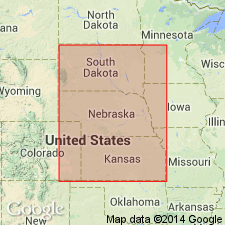
- Usage in publication:
-
- Sheep Creek beds
- Modifications:
-
- Age modified
- AAPG geologic province:
-
- Denver basin
Summary:
Pg. 16, 17. Sheep Creek beds. Assigned these beds to early middle Miocene, but H.J. and M.C. Cook, 1938 (Nebraska Geol. Survey Paper, no. 5, p. 44), assigned them to [middle and late] Miocene.
Source: US geologic names lexicon (USGS Bull. 896, p. 1973).
- Usage in publication:
-
- Sheep Creek beds
- Modifications:
-
- Areal extent
- AAPG geologic province:
-
- Denver basin
O'Harra, C.C., 1920, The White River badlands: South Dakota School of Mines, Department of Geology Bulletin, no. 13, 181 p.
Summary:
Pg. 36, 47. Sheep Creek beds are middle Miocene. Not identified within area covered by Black Hills map, except in southern part, chiefly in Nebraska. Strata of this age have been studied fifteen or twenty miles south-southwest of Agate Springs and they have there yielded a limited fauna.
Source: Publication; US geologic names lexicon (USGS Bull. 896, p. 1973).
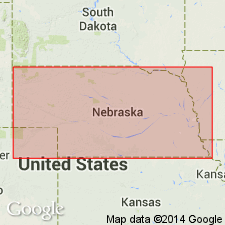
- Usage in publication:
-
- Sheep Creek beds
- Modifications:
-
- Age modified
- AAPG geologic province:
-
- Denver basin
Summary:
Pg. 44. Sheep Creek beds. Assigned them to upper and middle Miocene.
Source: Publication; US geologic names lexicon (USGS Bull. 896, p. 1973).
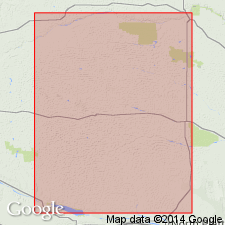
- Usage in publication:
-
- Sheep Creek formation
- Modifications:
-
- Revised
- AAPG geologic province:
-
- Denver basin
Summary:
Pg. 226, 227. Sheep Creek formation of Hemingford group. Upper formation in Hemingford group (new). Thickness 140 feet. Contains STIPIDIUM and BERRIOCHLOA fossil seeeds. Unconformable above Marsland formation (new). Underlies Valentine formation of Ogallala group. [Age is Miocene.]
Source: US geologic names lexicon (USGS Bull. 1200, p. 3560-3561).
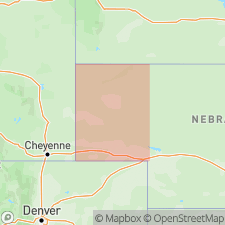
- Usage in publication:
-
- Sheep Creek formation
- Modifications:
-
- Overview
- AAPG geologic province:
-
- Denver basin
Summary:
Pg. 1254-1258, 1266 (table 2). Discussion of confusion in use of terms Snake Creek and Sheep Creek fm., both of which were named by Matthew and Cook and both of which have their type locs. in south-central Sioux Co., NE. Sheep Creek beds were said to lie unconf. on lower Miocene, = DAEMONELIX beds of Niobrara valley [Harrison fm.]. Matthew and Cook considered Snake Creek beds to be the remains of a fm. which they regarded as an outlier of the Ogallala. Snake Creek was said to lie on the eroded surface of Sheep Creek beds. Typical "Snake Creek" fm., or at least the so-called "Upper Snake Creek," is correlative with pt. of upper Ogallala gp.
Much of the Miocene "Snake Creek" or perhaps the so-called "Lower Snake Creek" seems to be in pt. not Snake Creek at all but Sheep Creek channel beds in place and in proper stratigraphic sequence. Also, some of the Miocene and "Sheep Creek" vert. fossils coll. from "Snake Creek" channel deposits have come from large blocks of Sheep Creek fm., which were broken away from banks of Snake Creek streams. These large blocks have dimensions of 10-20+ ft. and were never broken up or disintergrated by Snake Creek rivers. They lie buried in younger silt and sand, the true Snake Creek sediments, which are always channel-fill material.
Sheep Creek fm. consists of channel gravels and sands; fine silty sands, silt and clay, and harder caliche beds of widely ranging textural characteristics, all of which fill for the most part narrow valleys or ravines to depths ranging from 30-140+ ft. These deposits, many of which are isolated and unconnected, are widespread in northwestern NE. In central pt. of south half of Sioux Co., the Sheep Creek extends continuously as a basin deposit of channel, flood-plain, and slack-water sediments over about 25 sq. mi. Total thickness of Sheep Creek exposed above unconf. contact on Harrison fm. in type loc. is 200+ ft. Overlapping exposures in Dawes Co. indicate that fundamental formational entity incl. about 70 ft. of additional beds which are stratigraphically higher than uppermost Sheep Creek exposures in type loc. This does not incl. a still higher "mbr." to be described later. It is mainly this upper pt. of Sheep Creek that has been called by some workers "Lower Snake Creek beds." Distribution of this heretofore unrecognized mbr. of the Sheep Creek seems to be nearly same as Marsland fm., and at present it overlies and extends beyond limit of most of the Sheep Creek valley fills more or less throughout areal extent of Hemingford gp. and in some areas rests on Harrison fm. Original definition of Snake Creek and Sheep Creek fms. may be essentially valid and it is proposed to continue use of these names to correctly differentiated fms.
Source: Modified from US geologic names lexicon (USGS Bull. 1200, p. 3560-3561).
- Usage in publication:
-
- Sheep Creek formation*
- Modifications:
-
- Revised
- AAPG geologic province:
-
- Chadron arch
Cady, R.C., 1940, The Box Butte member of the Sheep Creek formation, Nebraska: American Journal of Science, v. 238, no. 9, p. 663-667.
Summary:
Pg. 663-667. Sheep Creek formation. Includes Box Butte member (new) in uppermost part. Formation, exclusive of Box Butte member, fills narrow channels in Marsland formation. [Age is Miocene.]
Source: US geologic names lexicon (USGS Bull. 1200, p. 3560-3561).
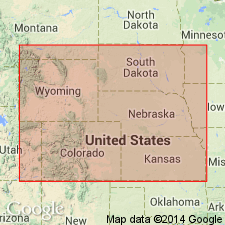
- Usage in publication:
-
- Sheep Creek formation
- Modifications:
-
- Revised
- AAPG geologic province:
-
- Chadron arch
- Denver basin
Summary:
Pg. 126-132. Sheep Creek formation. As used by Nebraska Geological Survey, the Sheep Creek includes all higher rocks of Hemingford group between Marsland formation below and Ogallala group above. Comprises three members (ascending) Spotted tail (new), Sand Canyon (new), and Box Butte. [Age is Miocene.]
Source: US geologic names lexicon (USGS Bull. 1200, p. 3560-3561).
- Usage in publication:
-
- Sheep Creek group
- Modifications:
-
- Revised
- AAPG geologic province:
-
- Denver basin
Cook, H.J., 1960, New concepts of late Tertiary major crustal deformations in the Rocky Mountain region of North America: International Geological Congress, 21st, Report, Copenhagen, 1960, pt. 12, p. 198-212.
Summary:
Pg. 204. Sheep Creek group. As shown on generalized section in type localities of late Tertiary deposits of northwestern Nebraska and eastern Wyoming. Overlies Runningwater formation (new) of "Marsland" group and underlies Snake Creek beds of Ogallala group. [Age is Miocene.]
Source: US geologic names lexicon (USGS Bull. 1200, p. 3560-3561).
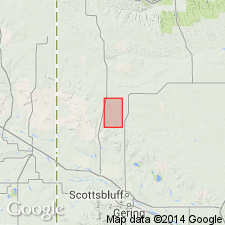
- Usage in publication:
-
- Sheep Creek Formation
- Modifications:
-
- Principal reference
- Revised
- Biostratigraphic dating
- AAPG geologic province:
-
- Denver basin
Summary:
Pg. 295-300, 325-328, fig. 6. Sheep Creek Formation of Hemingford Group. Restricted to type area, following Matthew and Cook, 1909 (Amer. Mus. Nat. Hist. Bull., v. 26, art. 27, p. 361-414). Chiefly buff-colored, compact or consolidated fine sand interbedded with brown or gray sandstone. Thickness 146+ feet; extends from about 4,794 to 4,940 feet elevation. Includes /Sheep Creek ash [informal, unranked] at 4,929 and 4,932 feet elevation; age is about 16 to 17 Ma. Authors subdivide formation into informal lower, middle, and upper parts; Spottedtail, Sand Canyon, and Box Butte Members of Elias (1942) not used. Unconformably underlies Snake Creek Formation of Ogallala Group; unconformably overlies Harrison Formation of Arikaree Group. Fossils (several vertebrate quarries). Carries Sheep Creek fauna. Age is late Hemingfordian NALMA.
[Principal reference section]: measured in "APHELOPS Draw," in E/2 E/2 sec. 30, T. 26 N., R. 55 W., [Chalk Buttes NE 7.5-min quadrangle], Sioux Co., northwestern NE.
[An identical geographic name may not be applied to a stratigraphic unit and its parts (CSN, 1933; ACSN, 1960, 1970; NACSN, 1983, 2005, 2021). Considered informal. The rank or lithologic term should not be capitalized.]
Source: Publication.
- Usage in publication:
-
- Sheep Creek Formation
- Modifications:
-
- Revised
- AAPG geologic province:
-
- Denver basin
Swinehart, J.B., Souders, V.L., DeGraw, H.M., and Diffendal, R.F., Jr., 1985, Cenozoic paleogeography of western Nebraska: Society of Economic Paleontologists and Mineralogists, Rocky Mountain Section, Rocky Mountain Paleogeography Symposium, v. 3, p. 209-229., Reprinted as University of Nebraska-Lincoln, Conservation and Survey Division, Reprint Series, no. 52
Summary:
Pg. 211, 212 (fig. 4). Sheep Creek Formation of Ogallala Group. Transferred to Ogallala Group [†Hemingford Group abandoned]. Is older than Olcott Formation and younger than Box Butte Formation (both of Ogallala Group). Age is Miocene, [shown on fig. 4 from about 16.5 to 16 Ma +/-].
Source: Publication.
For more information, please contact Nancy Stamm, Geologic Names Committee Secretary.
Asterisk (*) indicates published by U.S. Geological Survey authors.
"No current usage" (†) implies that a name has been abandoned or has fallen into disuse. Former usage and, if known, replacement name given in parentheses ( ).
Slash (/) indicates name conflicts with nomenclatural guidelines (CSN, 1933; ACSN, 1961, 1970; NACSN, 1983, 2005, 2021). May be explained within brackets ([ ]).

